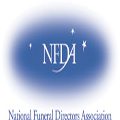Pandemic Flu and Mass-Fatality Preparedness, Preparing Your Funeral Home for a Pandemic
 Funeral directors will play a very important role in the event of a mass-fatality event, like a pandemic flu, particularly as large number of people will be grieving the deaths of their loved ones. Funeral directors will be counted on to provide the same high level of care and compassion for families during such a challenging time as they do today. Here are some things you will need to consider as your funeral home plans to handle any pandemic.
Funeral directors will play a very important role in the event of a mass-fatality event, like a pandemic flu, particularly as large number of people will be grieving the deaths of their loved ones. Funeral directors will be counted on to provide the same high level of care and compassion for families during such a challenging time as they do today. Here are some things you will need to consider as your funeral home plans to handle any pandemic.
Work Force:
* Expect to double or even triple the number of calls your funeral home will receive over a 10- to 12-month period. Most likely they will come in three surges, each lasting about six to eight weeks: one at the beginning of the outbreak, another about four weeks after the end of the first surge and a third about four weeks after the end of the second surge.
* Plan for additional staffing during a pandemic situation (tasks easily delegated to retired funeral directors in the area, mortuary school students and, finally, to volunteers from church or civic groups).
Dispositions:
* Crematoriums and cemeteries must look at surge capacity within their facilities.
Cremations, which have fewer resource requirements than burials, may be a more expedient and efficient way of managing large numbers of remains.
* If the body is not to be cremated, plans to expedite the embalming process should be in place.
* Remains may need to be stored temporarily before embalming, after embalming or for the duration of the pandemic wave (four to six weeks), so funeral directors should work with local medical examiners/ coroners and public health officials to address such a situation, which may include refrigeration, temporary interment or storage in vaults.
Death Certificates:
* In a pandemic, there could be as many unattended deaths as attended deaths. The former will require that the remains be processed by the medical examiner or coroner. In a surge situation with a reduced workforce and doctors otherwise occupied, it is expected that death certificates will be batch processed on a daily or weekly basis. The latter will be processed normally.
* Plan in advance for this situation and the potential delay in receiving remains or obtaining a death certificate.
Infection:
* Take special precautions to protect yourself and your employees from infection. Go to http://www.pandemicflu.gov and download the CDC Pandemic Flu Business Checklist.
Making arrangements for visitations, memorial services and gravesite services may be a concern because of possibility of contagion.
* Consult with your local or state public health officials to determine if such gatherings would be permissible. If not, you should plan now how to conduct all of these activities in a restricted environment.
* All staff shots and vaccinations should be up to date.
Supplies:
* Stock at least six months of supplies to handle the first wave of a pandemic.
* Families with multiple deaths are unlikely to be able to afford multiple higher-end products or arrangements.
* Your funeral home could quickly run out of lower-cost items, so be prepared to offer alternatives or plan to have these items in stock.
* Contact suppliers and develop a plan for timely delivery in the event of a pandemic.
Transportation:
* Transporting bodies from place of death or morgue to the funeral home and then to the place of burial may become an issue. Transporting remains from the place of death to their hometown may also be difficult, especially if air service is restricted.
* Work with your state and local emergency response and public health officials to plan for these eventualities, especially in a surge environment.
Religious and Ethnic Groups:
* Reach out now to religious and ethnic leaders in your community and involve them in planning for funeral management, bereavement counseling and communication. This is especially important in communities where large numbers of people do not speak English and where traditional funeral and burial rituals and ceremony may have to be curtailed.
Preneed Contracts:
* A funeral home may not be able to fulfill the terms and conditions of a preneed contract due to the unavailability of specific merchandise or other conditions.
* Consult with the state attorney general or local city/ county attorney to provide some sort of legal immunity against a lawsuit that might be filed for noncompliance due to the pandemic.
More information on preparing your workforce and workplace for a pandemic can be found on the U.S. Department of Labor/Office of Safety and Health Administration Website:
* Preparing Workplaces for an Influenza Pandemic http://www.osha.gov/Publications/influenza_pandemic.html
* Pandemic Influenza Preparedness and Response Guidance for Healthcare Workers and Healthcare Employers: http://www.osha.gov/Publications/OSHA_pandemic_health.pdf
* Proposed Guidance on Stockpiling of Respirators and Facemasks in Occupational Settings: http://www.osha.gov/dsg/guidance/stockpiling-facemasks-respirators.html
State and Federal Pandemic Action Plans
NFDA’s Advocacy Office is working with the U.S. Department of Health and Human Services to ensure that funeral service is represented in the future development of pandemic action plans.
Influenza pandemics have the potential to cause widespread illness, death and disruption. Pandemics can present a formidable response challenge. While it’s hard to predict when the next influenza pandemic will occur, advance planning can help to reduce the impact of future events. The 1918 pandemic resulted in an estimated 500,000 deaths in the U.S., the 1968 pandemic caused an estimated 34,000 U.S. deaths. This difference is largely related to the severity of infections and the virulence of the influenza viruses that caused the pandemics. The 20th century pandemics have also shared similar characteristics. Planning for influenza pandemics will help strengthen the capacity of the health sector to respond to other adverse events.
As part of our proactive efforts in this area, NFDA has sought out Pandemic Flu Emergency Action Plans from those states that currently have them in place.
We are providing links to those plans. They are available for your review to ensure that the role and responsibility of funeral homes and funeral directors are represented in them. What is especially critical is to insure that all funeral home employees are part of the first group to be vaccinated.
State Influenza Pandemic Plans: http://www.pandemicflu.gov/plan/states/index.html
National Influenza Pandemic Information and Strategy: http://www.pandemicflu.gov/plan/federal/index.html
Pandemic Flu and Mass-Fatality Preparedness
In a continuing effort to provide you with information on how to prepare for a potential pandemic influenza outbreak here in the United States, NFDA is providing four (4) White Papers on Mass Fatality Management for your information and use. Each paper is provided as a complete version, rather than a summary. NFDA feels that the information is too important and too detailed to do otherwise.
These documents were prepared by attendees at an April 2006 conference at Ft. Monroe, Virginia sponsored by NORTHCOM and HHS. Attendees included NFDA President Bob Biggins and Sr. VP for Advocacy John Fitch along with local, state and federal emergency management, law enforcement and public health officials. Other funeral service groups attended as well.
The purpose of the two-day exercise was to identify and address issues related to mass fatality management in a pandemic influenza environment. It was prompted by the confusion and lack of organization in dealing with the situation along the gulf coast and New Orleans in the aftermath of Hurricane Katrina.
The attendees at this symposium were divided into four groups: scene operations; morgue operations, family assistance and funeral service and dispositions. Each group worked from a common set of assumptions and identified issues of specific relevance for their respective groups. At the end of the day, each group was tasked with producing recommendations on how to address the issues they identified. These white papers are the result of those deliberations.
You are encouraged to use these documents with your emergency response and public health officials when you meet with them to develop a local and/or state pandemic influenza response plan.
If you have any questions on any of the papers or their findings, please feel free to contact John Fitch in the NFDA Washington, DC office at 202-547-0441.




